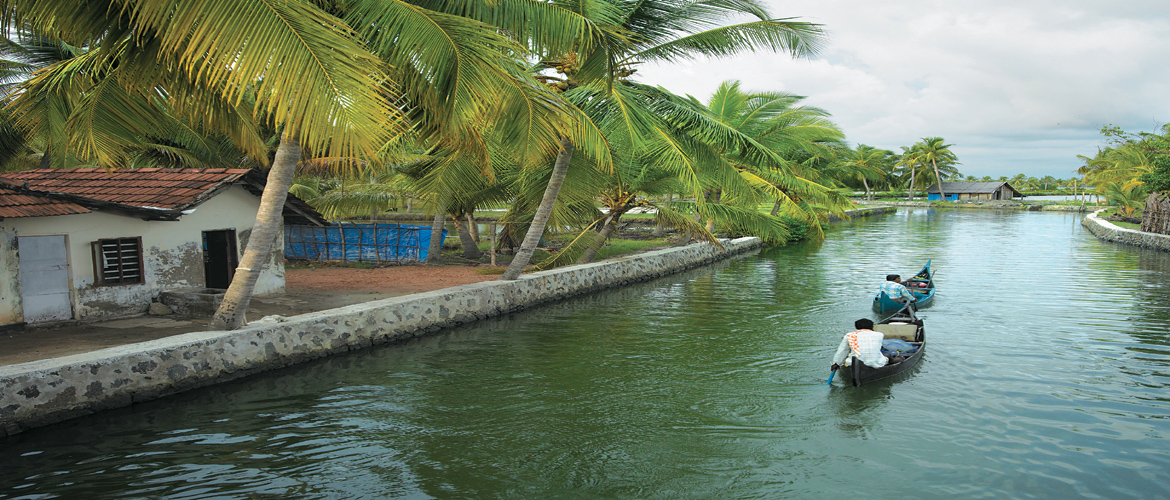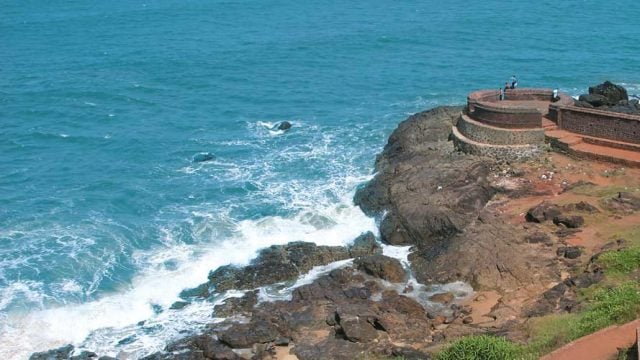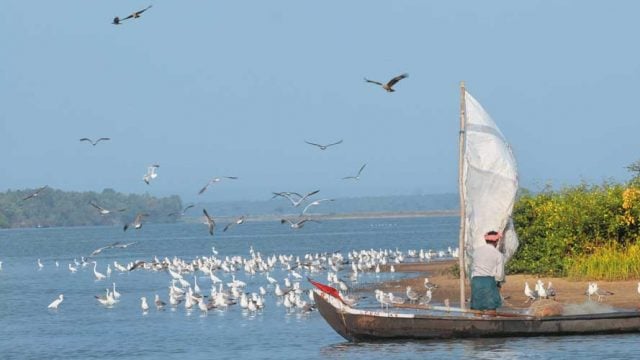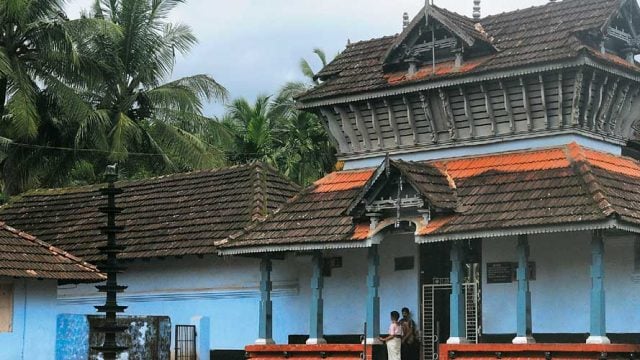They row the snake boats in enchanting unison, pushing past the blue waters with alacrity
This story defines Kuttanad in a sense; the engaging ways of the ‘Rice Bowl of Kerala’ are known to prompt the most seasoned of travellers to try the unusual. Kuttanad lies on the banks of Vembanad Lake in Alleppey and Kottayam districts. Its rich paddy fields change colour with the seasons: green in the monsoons, golden yellow and ripe for threshing in the winter. The rice is sowed carefully by hand in water-filled fields. It is tended to with similar care in local kitchens where it transforms into a hot, comforting dish, prepared in an earthen pot and covered with red-hot fish curry or vegetables made with coconut, chillies and cumin. The rich flavours linger long after the meal, wrapped within the soft husk of a memory.
A similar sumptuousness touches everything Kuttanad has to offer, from the soothing and stunning rides on the backwaters, to the slanting rubber plantations that swish mysteriously in the wind, to the many heritage structures that appeal to the senses, both historically and aesthetically. The beautiful tapestry of this land is embellished with myriad tassels, some unusual, such as spiders the size of a man’s hand and snakes that emerge after the rains, and some unique, such as 20 varieties of bananas, each delicious in its own way. To truly soak in the colourful, flavourful experiences that Kuttanad offers, it is advisable to travel like the local populace – by boats, trains, ferries, buses and occasionally on an elephant!

Life here is slow-paced and deceptively calm. There is nothing to suggest that this was once the heartland of a powerful communist movement. The 1946 People’s agitation in the Punnapra-Vayalar region against the dictatorial methods of rulers is now considered legendary. Guided by communist party workers, landless peasants in the area came together to protest, among other things, the appropriation of power by the Dewan of Travancore, CP Ramaswamy Iyer. Vayalar garjikunnu – Vayalar roars – wrote poet P Bhaskaran, a thunderous sentence to describe the Punnapra-Vayalar revolt, brutally suppressed. The bullet marks left from that quelling of the People’s power are but a symbolic reminder of those days. There are other enduring icons of the past, including the coir trade, introduced to Alappuzha by an Irish gentleman, and the rubber plantations of Kottayam, which can be traced to the British.
Riding the backwaters as the fishermen cast their nets, with the dull thudding of coconuts in the thin strips of land between the lagoons reverberating softly in the background, are like mementoes that one carries back. In a sense, the backwaters are an apt motif for Kuttanad. Water birds rise and swoop down in a wave of greyishpink, while villagers go about their lives by the banks. Boats laden with agricultural and industrial goods pass by, the boatmen digging deep into the thick silt of the waterbed to push past the profusion of water hyacinth, green and golden mangoes fall from the lush fruit-bearing trees and the patthu mani poo (10 o’clock flowers) appear in varied hues. It is clear that even though the world around it has changed, Kuttanad has chosen to stay how it was, a decision that the world wholeheartedly endorses and applauds.
Kuttanad
OT Getaway Guides





